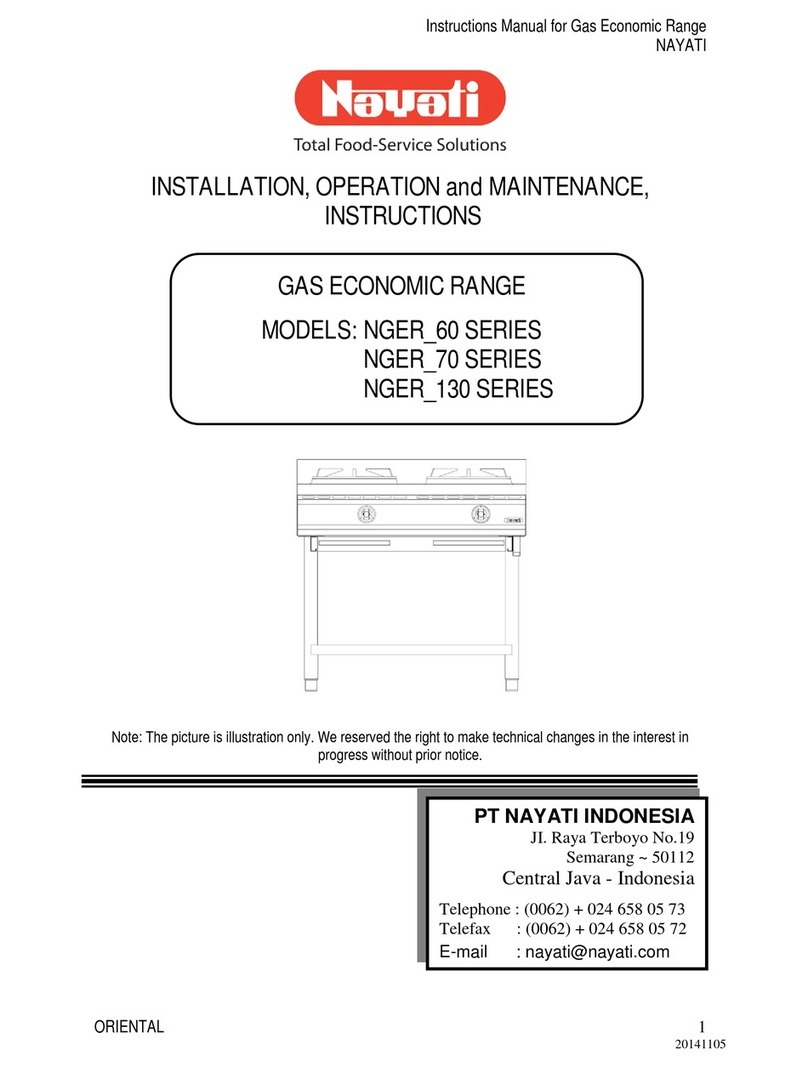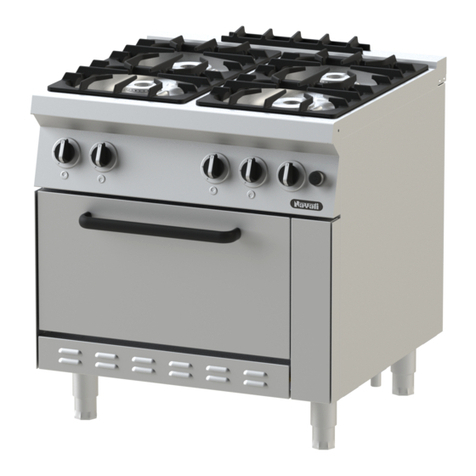
page 2
1. INSTALLATION
Before installation and operation of the appliance, the following must be observed.
For EU und CH (Switzerland) applies:
The applience must be connected and operated according to national regulations. This applies for
installation, air circulation of the room and exhaustion of combustion products.
Only for CH (Switzerland) applies:
SVGW-norms for gas G1 (2002): Installations for gas
EKAS directories for liquid gas
Prescriptions from instances of the cantons (for ex. fire police)
For DE (Germany) applies:
The applience must be connected according existing installation regulations. It may only be operated in a
room with sufficient air circulation to avoid formation of unhealthy combustion products.
The following regulations, technical rules and regulations are compulsory for installation and operation of the
appliance:
Building regulations of the countries
Fire regulations of the countries
Regulations working premises
Building regulations fire technical requirements and air circulation
DVGW - Instruction G 600 (TRGI), „Technical rules for gas installations“
TRF „Technical rules liquid gas“
DVGW – Instruction G 634 „Installation commercial kitchens, gas operating installations“
Accident regulations VBG 21
Accident regulations VBG 77
Security rules kitchens ZH 1/37
Directions „Air technical installation kitchens“ VDI 2052
Regulations energy supply installations (GVU)
1.1 Directions
For the installation and adjustment of the appliances as well as for the changes of the gas types, an
authorized technician must be called. Sealed parts by the producer or authorized agent may not be touched
by the technician.
During operation the appliance must be supervised.
1.2 Place of Installation / Setting Appliance
The appliance must be placed on a stable solid platform. The platformmust be flat and horizontal. When
placed on a table, this must be of non-combustable material.
If the appliance on the wallside is connected with flexible tubes, then the appliance must be screwed to the
platform.
This fixation is a must for the Table Models.
If the appliance is placed near temperature sensitive parts (f.i. furniture, electric cables in the wall) there has
to be a distance of 100 mm to the rear wall and 200 mm to the side walls.
1.3 Gas connection
Before connecting the appliance, control if the gas type corresponds to the gas type od the place of
installation.
If this is not the case an adjustmanet must be made before starting up the appliance.
If flexible tubes are used, these tubes must be in DIN 3384. (Depending of the countries, those which are
allowed)
In the gas inlet there must be a gas stop cock, fixed in a suitable position.
Depending on national requirements, a thermo stop cock must be installed before the appliance.
After connection, all gas pipes must be checked with foam or leck sprays under pressure for indentifying gas
leaks.





























